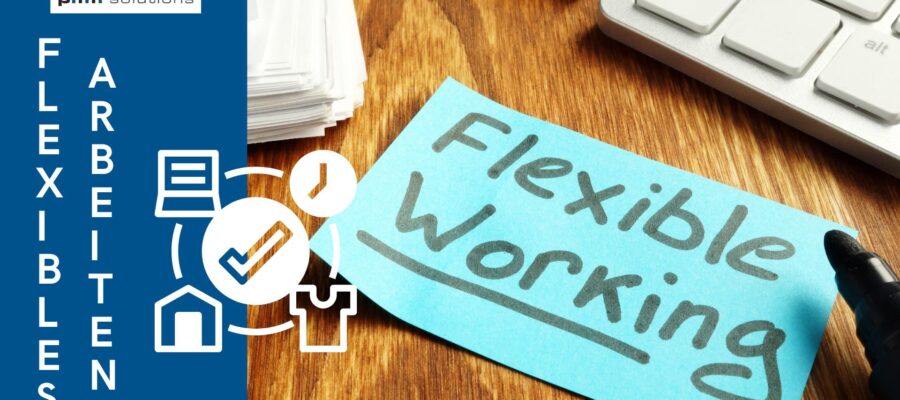Fixed working hours, from 9 to 5 and the classic 40-hour week are considered obsolete and prevent a healthy work-life balance. The trend Flexible working is very popular Flexible working hours allow employees to balance work and private life. Thanks to digitalisation and globalisation, the possibilities available are increasingly numerous New workplaces. In addition to organizing staff deployment planning, the FOPH decision of 13 September 2022 on recording working time represents a major challenge for many companies with flexible working hours. Several options are available to accommodate employee wishes and legal requirements. We present some variations and possible solutions in this article.
Flexible working models

Thanks to digitalisation, new forms of work are constantly being developed that are independent of place and time. Here are some work models that offer more free time or flexibility:
- Part-time job: Reduction of normal working hours. Especially popular with parents caring for minor children, people caring for family members or those who need more free time for their hobbies.
- Work Sharing: Two or more employees share a job position (part-time work).
- Desk sharing: This concept not only concerns flexible working, but also flexible work spaces in the company. With the Desk Sharing Office model, employees do not have a fixed workstation in the office.
- Annual working hours: Seasonal working hours.
- I work on request and On-call service: It is a form of work where employees take on work as needed or on call.
- Flexible hours: Employees can freely choose to start and finish work within a specific time window.
- Functional time: It is a variant of the flextime pattern and is also called Autonomous working group over time Time windows are determined for the entire department, a team, or the workspace.
- Shift work: In companies that produce longer than the usual daily working hours. Shift workers are replaced in their work by another shift worker.
- Night, Sunday or weekend work: Work on weekends, Sundays or nights.
- Home office, mobile working and teleworking: Work location and/or working hours are flexible.
- Gap year: A break for personal reasons, limited to a maximum of 12 months.
- Partial retirement: A smooth transition from normal working life to retirement by reducing working hours.
- Optional working hours: Also known as modular working hours, it allows for self-determined planning of work based on needs or possibilities.
- Processing: A form of employment in which employees can work from abroad for a certain period of time and under certain conditions. In other words, work is a combination of work and vacation.
Advantages
- Freedom: Rigid work schedules can take a toll on your life.
- Participation: Employees have a say in their working hours.
- Cost savings: Reduction of office space and additional costs.
- Better concentration: Employees can work when and where they feel most comfortable.
- Increased motivation at work through employee satisfaction.
- Guarantee jobs through attractive working conditions.
- Work-life balance and health: Example: Employees can set their working hours based on their personal chronotype.
- Better employer branding and ability to innovate give the company more opportunities to hire employees.
- Larger talent pool: as employees can be hired from other locations.
Conclusion
The processes of globalization and digitalisation guarantee ever greater working (time) flexibility. Jobs are increasingly being offered regardless of location and time. And not only in the world of office work, but also in industry, commerce and crafts, we hear about more flexible working hours.
Flexible working hours allow for healthy and ergonomic ways of working. That’s why many companies attach great importance to New Work. The technical equipment of the company plays an important role. How digital is the company and especially the HR department? Digital workforce management solution concepts exist to avoid the use of Excel tables or timesheets. In addition to staff deployment planning and time recording, this software also offers support tools, e.g. B. for booking rooms for desk sharing, recording project times, eAU, building access, training management and much more. Flexible working can have very positive effects, but it must be well organised. Only then will companies and workers be able to benefit equally.
latest posts published

Are you starting to run? This is how we persevere!

Your time invested profitably every day: What are your EPAs?

Energy flat rate: who is entitled to the 300 euro bonus?

Here’s how companies choose the right solution

Set and achieve goals with SMART

Different working models and employee retention: a connection?

Flexible working hours

Personal Kanban in the notebook: be productive

Reporting for effective workforce management


